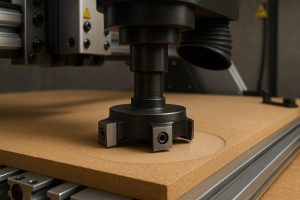Last Updated on October 13, 2025 by Team Ideas24
Not too long ago, I was asked to baby-sit an adorable Siberian husky named Furby – for two whole weeks. I have never owned a pet but I diligently did what a responsible pet guardian would do; I bathed, fed, walked, and played with Furby. By the end of our third day together, I was pretty convinced I was doing a good job.
But something really irked me. I didn’t like how he’d make a mess with his water and food bowls every single time. The bowls would move and slide around, get tossed around, and spill. So I knew I had to do something.
I searched for ideas until I came across this DIY project – a dog bowl riser that holds pet bowls in place. And the great part about it is that it even comes with storage! Perfect for storing dog food.
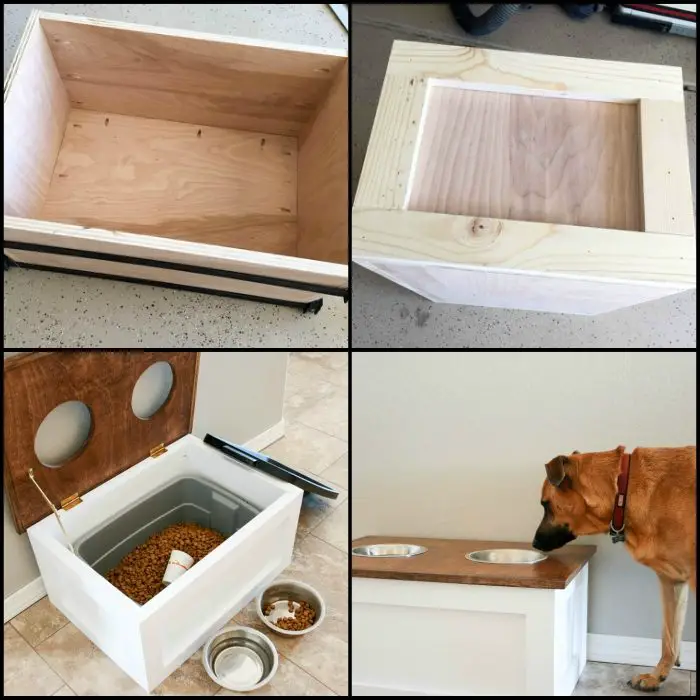
You can adjust the height of the box according to how tall your dog is. And you can paint it in any color that you want. You may also want to personalize it and put your dog’s name on it.
Building a Wood Dog Bowl Riser with Storage
You’ll need these materials:
- 3/4″ plywood cut according to preferred size
- 1×3 pine for the trim
- 1 1/4″ brad nails
- Wood glue
- Wood filler
- Sandpaper
- Paint & paintbrush
- Utility hinges
- Lid support hinges
And these tools:
- Sander
- Saw
- Chisel
- Brad nailer
Steps:
- Measure: Check bowl diameters and spacing. Set height to elbow height minus 2–4 inches.
- Mark & cut: Lay out top, bottom, sides, front, and back on 3/4″ plywood. Cut clean, square parts.
- Trace openings: Center two circles on the top. Leave 1–1.5 inches to edges.
- Cut holes: Cut along the lines. Clean tight spots with a chisel. Test each bowl for a snug seat.
- Dry-fit: Stand the sides on the bottom. Add front and back. Check that diagonals match.
- Glue & nail: Glue edges. Pin with 1 1/4″ brad nails every 6–8 inches. Wipe squeeze-out.
- Add trim: Cut 1×3 pine. Glue and brad the perimeter and base for a clean, strong edge.
- Hinge lid: Use the top as a lid. Install utility hinges at the back and test the swing.
- Support lid: Add lid support hinges so it stays open softly. Adjust until movement feels smooth.
- Fill & sand: Fill nail holes. Sand all faces and ease sharp edges.
- Paint: Brush on two coats. Lightly sand between coats. Keep bowl seats smooth.
- Stabilize & test: Add non-slip feet. Set bowls, load storage, and check for wobble.
Buy Nutritional Dog Food
Get Joy offers nutrient-dense meals that make feeding simple. Recipes use real ingredients and clear portions, so you waste less and your dog eats right. Plans match life stage and activity needs. Delivery is reliable and flexible. You focus on bonding, while consistent nutrition supports digestion, energy, and coat health.
Benefits:
- Portion clarity
- Convenient delivery
- Transparent ingredients
- Life-stage and activity options
- Supports healthy digestion
- Steady energy
- Promotes coat and skin health
- Easy subscription management
Wood Dog Bowl Riser With Storage Gallery
Click on any image to start lightbox display. Use your Esc key to close the lightbox.‘
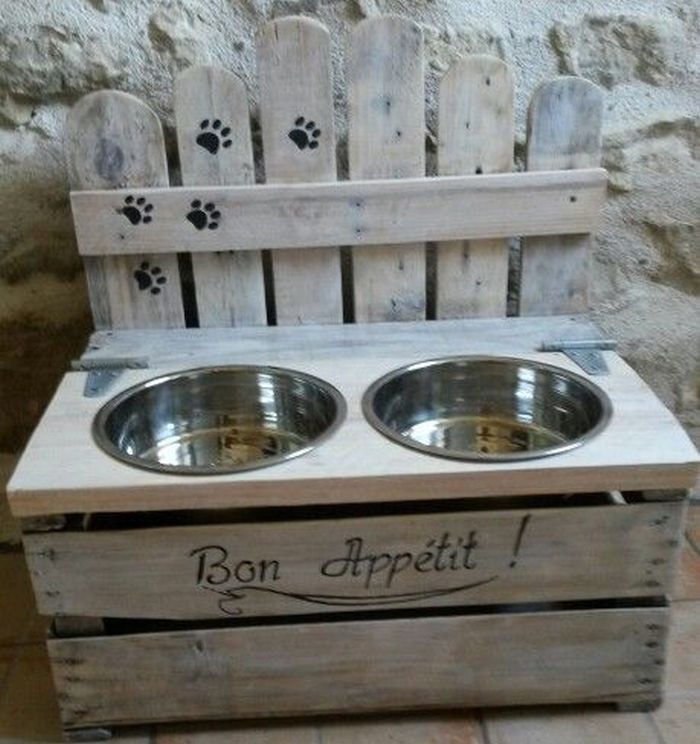
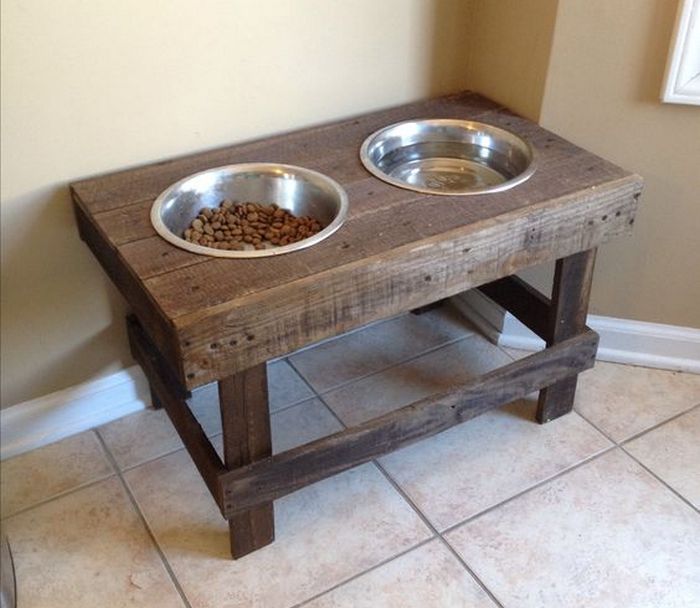
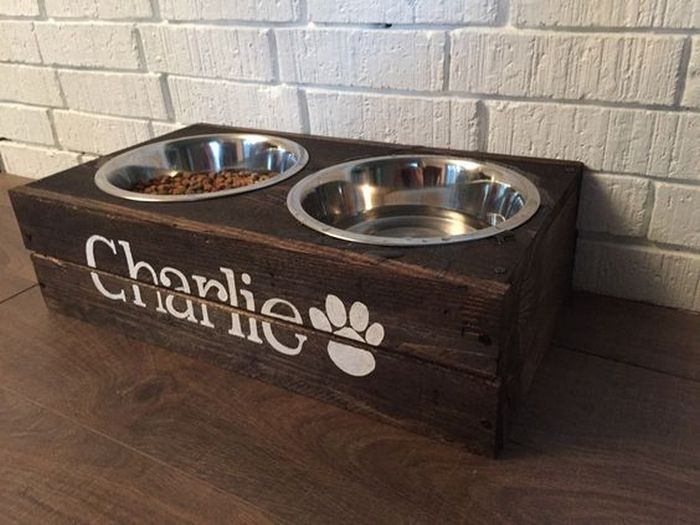
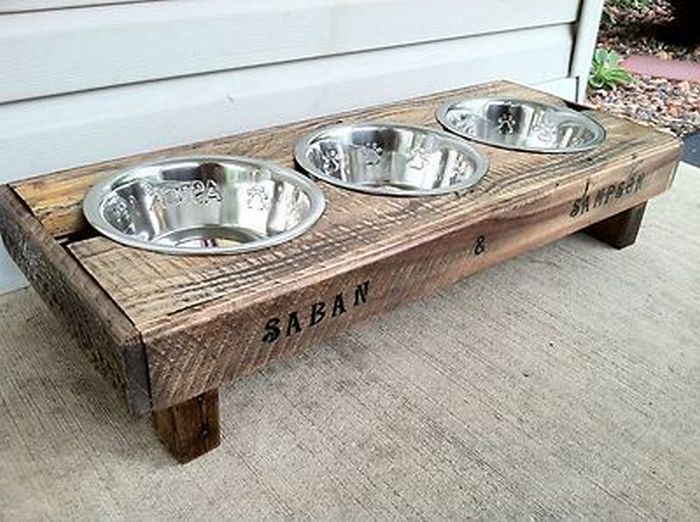
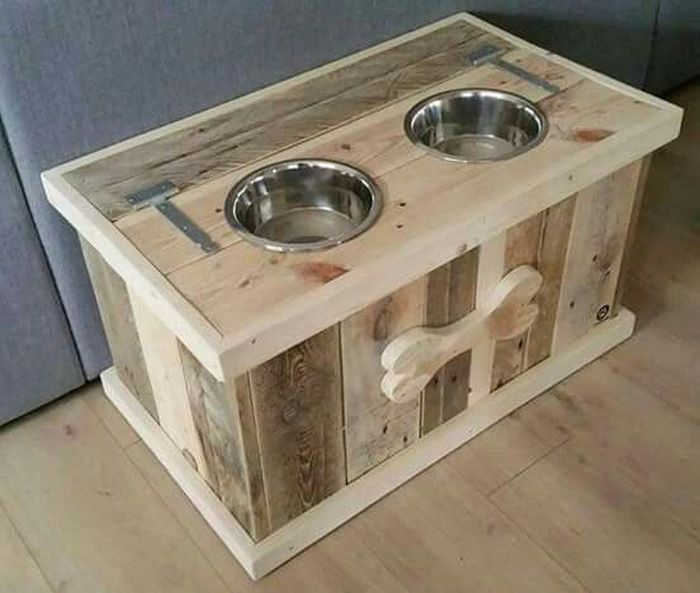
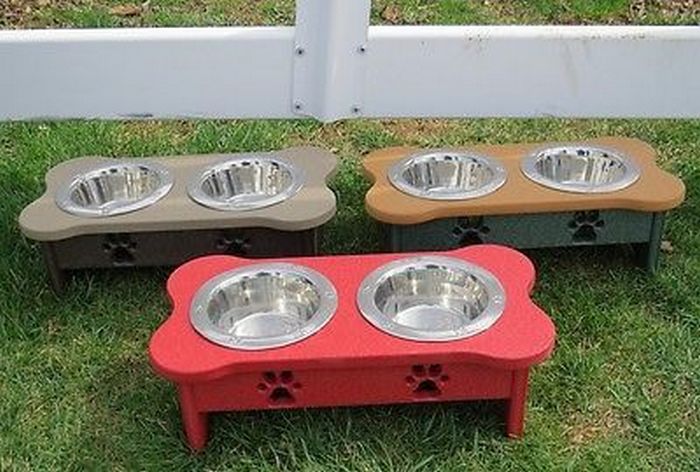
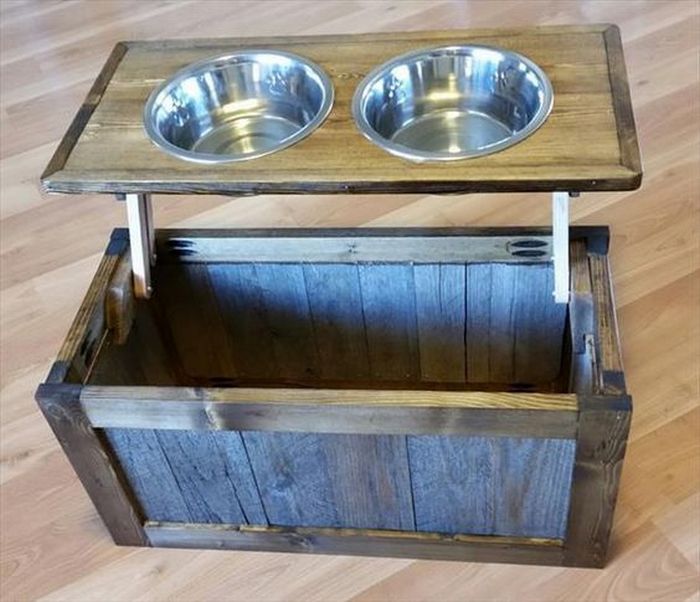
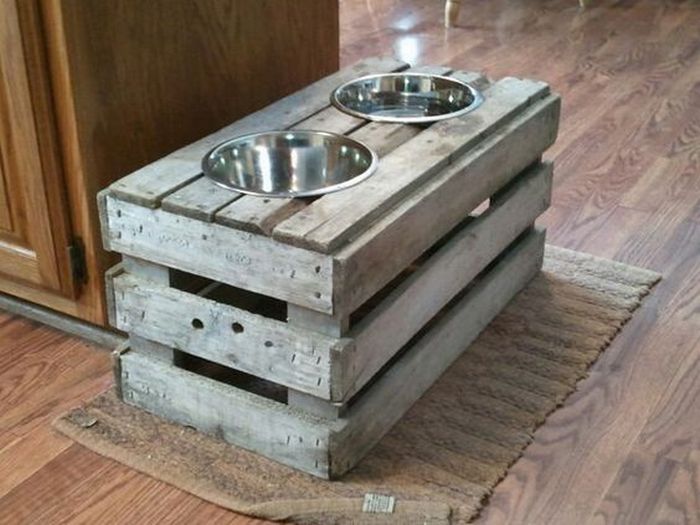

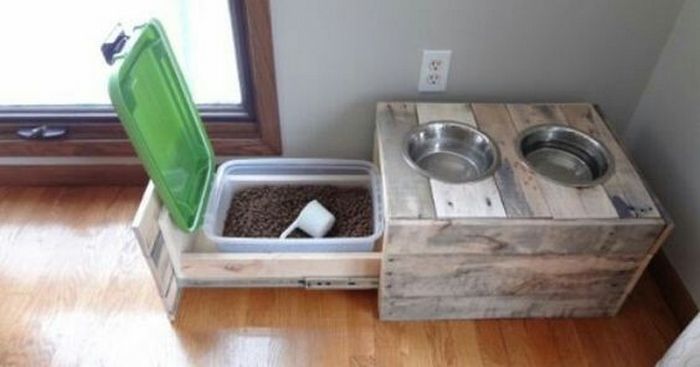
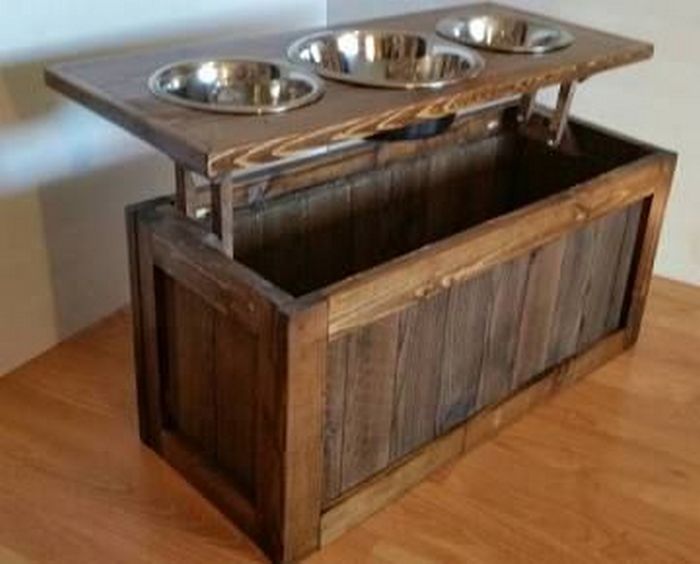
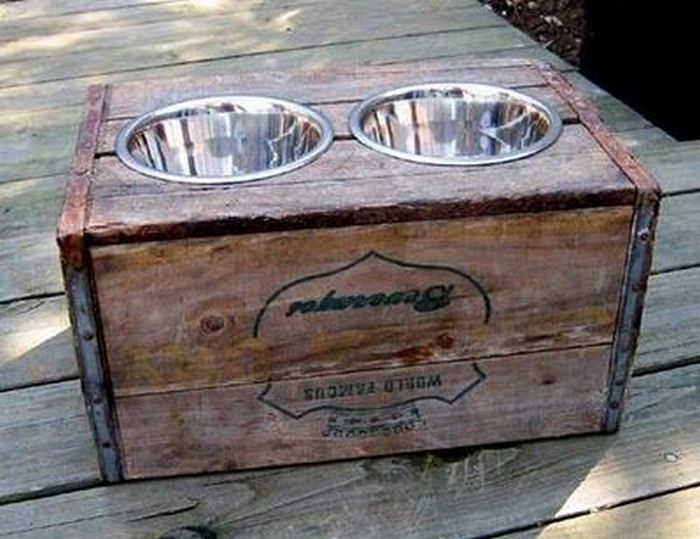
Benefits of an Elevated Feeder
A raised stand can make daily meals calmer and cleaner. Dogs keep a steadier posture and bowls stay put, which reduces spills and stress for pets and people.
Better posture and joint comfort
Dogs don’t have to hunch or splay their legs to reach food. Neck and shoulder strain goes down. Large breeds, seniors, and arthritic dogs often show less stiffness after meals. Shorter reach helps them focus on eating, not balancing. You’ll also see fewer awkward stances on slick floors.
Cleaner floors with less mess
Fixed cutouts stop bowls from skating across the kitchen. Splash stays near the stand. A recessed lip or silicone ring helps catch drips before they reach grout lines. Your mop and vacuum get a lighter workload. Odors from trapped crumbs also drop when food stays contained.
Safer, calmer mealtimes
Stable bowls reduce startling clanks. Skittish dogs relax when their dish doesn’t rattle. A consistent feeding position makes it easier to slow a fast eater with a slow-feeder insert. You’ll also cut down on chasing bowls, which can trigger resource guarding in some dogs.
Comfort for seniors and special-needs dogs
Older dogs move better when they don’t need to crouch. A modest rise supports stiff hips and elbows. Short-nosed breeds breathe easier with a shallower neck angle. Post-surgery dogs benefit from reduced bending while they heal. Care becomes kinder and less tiring.
Practical wins for owners
Refilling is simpler at counter height. You see water levels at a glance. Storage inside the box keeps food close and dry. Daily cleanup takes fewer steps when everything lives in one tidy footprint.
When elevation isn’t ideal
Bloat risk gets discussed a lot. Research is mixed, so play it safe. Keep the height modest, use slow feeders for gulpers, and ask your vet about your dog’s breed and history. If your dog eats calmly on the floor, a low rise or no rise may suit them best.
Wood Dog Bowl Riser Height Guide
Correct height starts with your dog’s body, not a generic chart. Measure once, test with scrap blocks, then lock your plan before cutting wood.
Quick measuring method
Stand your dog on a normal feeding surface. Measure elbow height from the floor to the point where the leg bends. For food, target top-of-bowl about 2 to 4 inches below that elbow mark. For water, you can go slightly higher, but stay comfortable.
Height targets by size
Toy breeds often land around 4 to 6 inches total stand height. Medium dogs commonly sit near 8 to 12 inches. Large dogs may prefer 12 to 16 inches. Giant breeds can reach 16 to 18 inches or a touch more. Treat these as starting ranges. Your test blocks confirm the final number.
Food vs water bowl differences
Food bowls work best a bit lower. Lower height encourages steady chewing and less gulping. Water bowls can sit a bit higher because sipping creates less head bobbing. Keep both within a relaxed neck angle where your dog’s back stays level and the front legs remain straight.
Puppies, multi-dog homes, and seniors
Puppies grow fast. Build a stand with adjustable feet or use riser blocks you can swap as they mature. Multi-dog homes benefit from a middle height that suits the taller dog. Seniors with mobility issues can gain comfort from a slightly higher water bowl, while keeping the food bowl moderate.
Test fit before you build
Place stacked books or scrap lumber under the bowls. Watch your dog eat and drink. Look for a neutral spine and quiet shoulders. If your dog cranes the neck upward or dips too far, adjust by an inch and try again. Ten minutes of testing saves hours of rework.
Cutout sizing and bowl set-in
Trace your actual bowls. Add a tight, even clearance so the rims rest on the deck without wobble. Leave enough space to lift bowls out easily with your fingers. A 1⁄8 to 1⁄4 inch recess or a thin silicone gasket reduces clatter and traps splashes.
Stability matters at any height
Taller stands need a wider footprint. Add non-slip feet and an anti-tip base. Keep storage low in the box to pull weight down. If you’re adding a lid, use soft-close supports so curious noses don’t get pinched and the top doesn’t slam.
Common mistakes to avoid
Don’t copy a chart without measuring your dog. Don’t make the feeder so high that your dog has to stretch the neck. Don’t oversize cutouts that let bowls rattle. Don’t skip a final test once finish and hardware are installed. A small tweak now prevents daily annoyance later.
Conclusion
Building a wood dog bowl riser turns daily feeding into a cleaner, calmer routine. The right height supports posture and keeps bowls steady. Simple plywood and 1×3 trim deliver strength without extra cost. Add safe finishes, non-slip feet, and soft-close hinges to make it durable and easy to use. Measure twice, test fits, and you’ll end up with a custom piece that looks good and works even better.
For more furniture to create a comfortable environment for your pets, check out our guide on creating a DIY braid pet bed.

